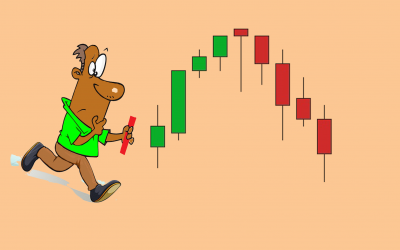The CAD moves are highly influenced by Oil and the US dollar.

Canada has the second largest oil reserve in the world after Saudi Arabia and is the largest exporter of oil to the US.
Let’s now discuss data that moves the CAD
MAJOR ECONOMIC data that moves the CAD
1. Crude Oil Inventories
This measures the weekly change in the number of barrels of crude oil held by the US companies.
The level of inventories influence the price of petroleum products which can have an impact on inflation.
The amount of oil inventories in reserves in the US greatly affect the CAD.
This is how..
If the US crude oil inventories is high, it means there will be less demand for oil from Canada and its prices will fall.
On the contrary, If the crude oil inventories is low in the US, demand for oil from Canada will increase.
Since the US economy depends most on oil, increase in demand for oil lead to increase in oil prices hence strengthening the CAD.
If there is an increase in crude oil inventories in the US barrels more than expected, it implies less demand for oil therefore a weak CAD.
The opposite is true for the above statement
2. Consumer price index (CPI)
Since inflation plays a big role in defining the value of CAD.
It’s one of the duties of the bank of Canada to promote monetary stability, keeping inflation to the target boundaries.
Consumer price index measures the changes in prices of goods and services at the general price level in a given period of time.
If the CPI is low, it shows less value in CAD
To gauge the level of inflation in Canada, traders and the BOC will look at the CPI report results compiled by the office for National statistics.
A change in the results will require the BOC to use its monetary policies which obviously will affect the CAD.
3. Gross domestic product GDP
The GDP measures the general performance of the country’s economy.
This greatly moves the CAD
Therefore, used to determine the economic status of Canada’s economy; whether it is growing or collapsing.
A high GDP implies strong growth in the economy as well as a strong CAD.
Conversely, a fall in GDP shows that the Canadian economy is not doing well and this discourages investment hence a fall in the value of the CAD
4. Trade balances.
Canada’s reliance on exports for its economy( international trade) attracts investors and traders attention to the country’s trade balances reports.
This helps them to gauge its growth and status in relation to other countries or its trading partners.
This displays the imports and exports values.
A surplus trade balance indicates healthy economy hence strong CAD. The reverse is true
Trading the USD/CAD
You will see strong moves on the USD/CAD at the release of very important economic news both from the US and Canada.
This is because the two economies are dependent on each other in trade though very competitive.
The USD/CAD is also active during the US trading session especially during the overlapping session with the European session.
US and CAD Economic data
The US data and CAD data are always released at the same time.
Their mode of trade is almost the same and the two countries are dependent on each other when it comes to trade.
Positive data from US with negative data from Canada strengthens the USD/CAD while the negative data from US with positive data from Canada weakens the USD/CAD.
Getting to know CAD
Canadian Dollar is Canada’s legal tender currency. Its nickname is Loonie. It is nickname is got from the name of the national bird.
The Canadian value is highly driven by oil prices making it a commodity currency.
oil and USD/CAD
As the prices of oil rise, the CAD follows. Oil price greatly moves the CAD
This shows that the CAD and oil prices have a positive correlation and affect each other.
The most affected pair is the USD/CAD.
Canada has the second largest oil reserve in the world after Saudi Arabia and is the largest exporter of oil to the US.
This simply means that, a hike in oil prices directly affect USD since most of its economic activities depend on oil.
More to that,
Since oil prices rise with rise in the value of the CAD, an increase in oil prices strengthens the CAD as it weakens the USD.
Therefore, USD/CAD has a negative correlation with the oil prices.
When the prices hike,
More of the USD will be required to purchase less of units of oil. In this case, you short the USD/CAD.
Since the US economy depends most on oil, increase in demand for oil increases oil prices hence strengthening the CAD.
Hours of Trade.
USD/CAD normally ranges during most part of the day.
It normally makes significant movements during the hours when the European session is overlapping with the US trading session.
us economy and CAD
The Canadian dollar is greatly affected by the US economic dynamics.
Apart from the USA being its closest and the only neighboring country by land, it is the major trading partner with Canada.
When the USA experiences an expansional growth in its economy, the demand for Canadian goods and services also grows/increases .
This means more demand for the CAD to purchase her goods hence increasing GDP and currency appreciation.
While a fall in the US economy also reduces the demand for Canada’s goods and services, CAD as well as fall in her economy and currency value.
Apart from trading relations,
Most commodity prices are priced in dollar so fluctuations in the prices of the commodities especially oil from Canada affect the dollar as well as the CAD.
Canada Facts and Figures
- Country Name: Canada
- Government Type: Federal Parliamentary Democracy
- Capital: Ottawa

- Independence: 1st July 1867
- Neighbors: USA
- Population: 36.3 million
- Head of state: Queen Elizabeth II
- prime minister: Justin Trudeau
- Currency: Canadian dollar (CAD)
- Imports: $419 billion
- Exports: $390.1 billion
- Time Zones: GMT -8, GMT -7, GMT -6, GMT -5, GMT -4
- Website: http://www.canada.gc.ca/home.html
- Major Cities : Toronto,Ontario,Montreal, Quebec,Vancouver, Calgary; Alberta, Edmonton;Alberta, Ottawa;Ontario, Hamilton, Winnipeg, Kitchener.
Monetary and fiscal policy moves the cad
The Bank of Canada is the body behind Canada’s monetary policy.
Like any central bank, its mandate is to stablise prices and inflation for a better economy.
Its inflation target is 2% and is set by the bank of Canada and the federal government and is reviewed 8 times a year.
The bank uses monetary tools at its disposal to monitor inflation rate.
Such as raising interest rates when inflation rate goes beyond the target and lowering the rate when inflation is very low.
Avaricious Life of a Newbie Trader.
Life of a Newbie Trader in Forex is super Interesting. With a lot of eager to make money, you never want to miss out on any chance. When you read about Forex trading, everything is simple. You may even start to think that your friends may not recognize you after...
- Oh, bother! No topics were found here.



